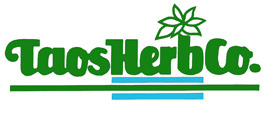Address: 710 Paseo del Pueblo Sur, Suite J. Taos, NM 87571 � Map � Call 1.800.353.1991 or 575.758.1991
We provide hundreds of products from organic, sustainably wild-crafted and superior quality herbs to help you explore natural healing options. Our YERBA Hair Care is known across the nation for promoting healthy hair without buildup. Yucca and globemallow have been used for centuries in the Southwest for shiny, healthy hair. Our products are never tested on animals. Our ceremonial Sacred Herbs, Smudge Sticks and Incense Resins are of the highest quality. Many are made exclusively for Taos Herb Company by our Native American friends.
Image Copyright: www.123rf.com/profile_solerf, Copyright: kesu87 / 123RF Stock Photo, Copyright: olegdudko / 123RF Stock Photo, Copyright: btwcapture / 123RF Stock Photo
Statements on this web site have not been evaluated by the Food and Drug Administration. These products are not intended to diagnose, treat, cure, or prevent any disease.
All images, text and content Copyright, © 2017 Taos Herb Company. All Rights Reserved
 (Sambucus nigra) is a deciduous shrub that grows to a typical height of 8 to 10 feet (some species up to 30 feet) and is member of the moschatel family Adoxaceae. As one of the human race's earliest plant companions, it has been used for medicinal, culinary, and cosmetic purposes from the Stone Age to modern times.
(Sambucus nigra) is a deciduous shrub that grows to a typical height of 8 to 10 feet (some species up to 30 feet) and is member of the moschatel family Adoxaceae. As one of the human race's earliest plant companions, it has been used for medicinal, culinary, and cosmetic purposes from the Stone Age to modern times.